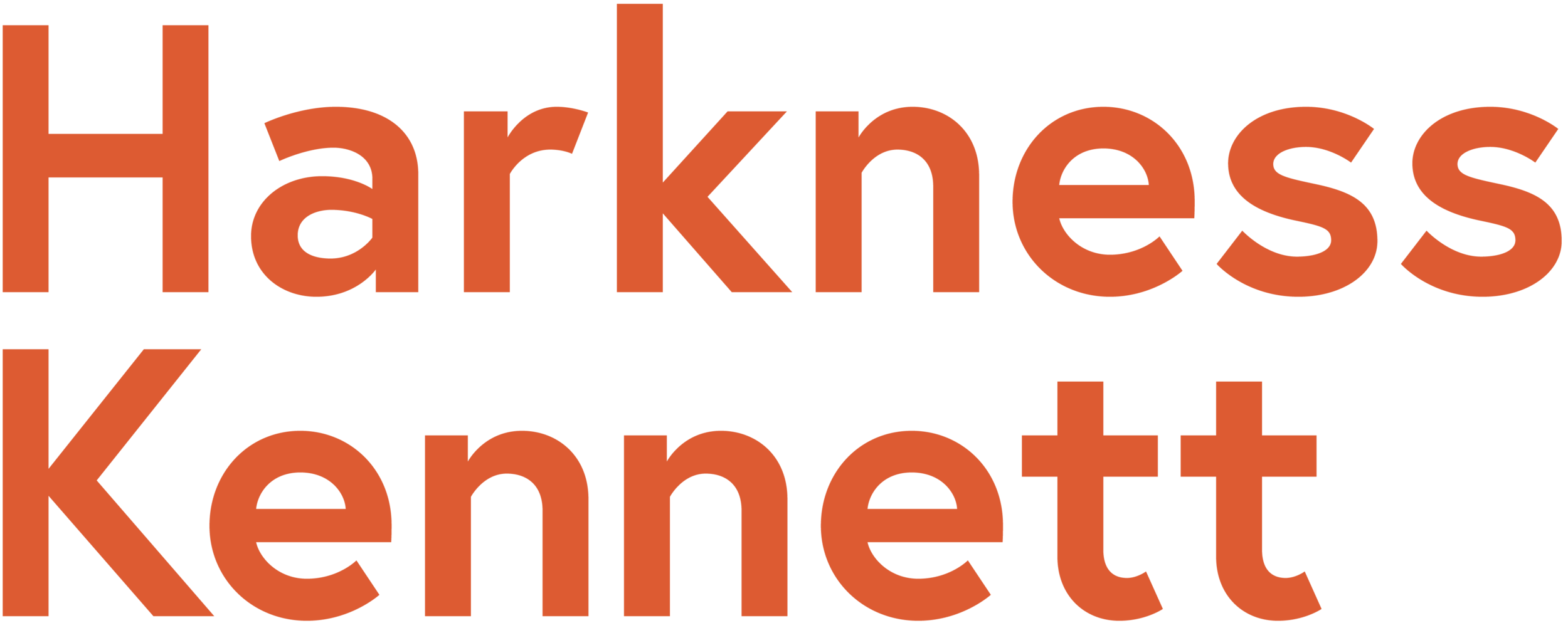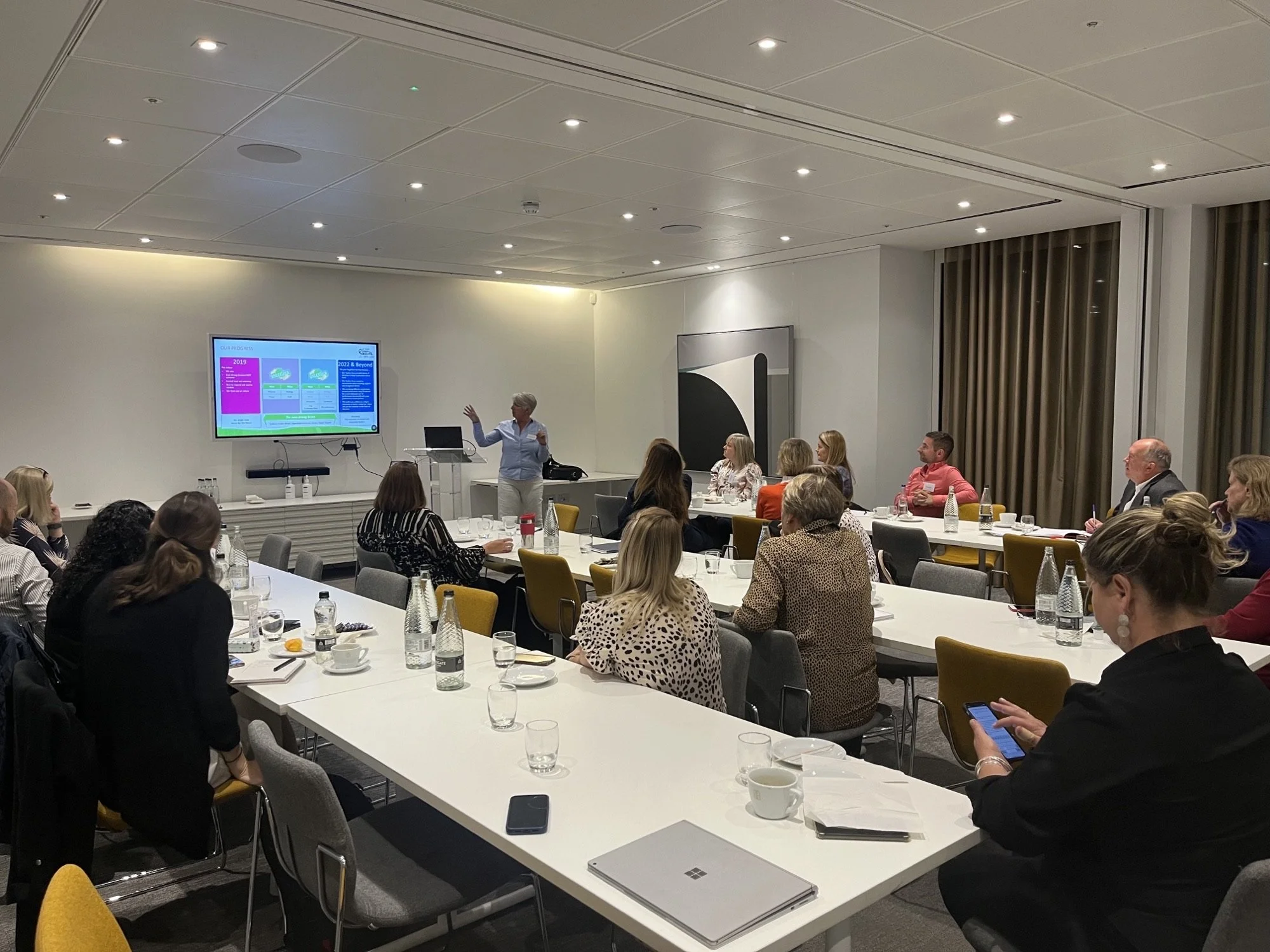Becoming purpose-led?
Harvard Business Review’s research identified purpose as the fourth driver of high growth; and that while 90% of executives say they understand its importance, only half say purpose informs decision-making. So what does this mean for communicators stepping out on the purpose journey?
Today we were delighted to hear from Sam Hodlin, Head of Internal Communications at DS Smith, and Rachel Penfound, Head of Internal Communications and Board Secretary at Pinsent Masons, who shared with us their experiences of launching and embedding an authentic organisational purpose at our breakfast session.
It was really interesting to hear how two such different organisations (one a FTSE 100 company with 32,000 employees in 37 countries, and the other a partner led international law firm with 3,500 employees) had to some degree taken similar approaches, but tailored them completely to the culture and structure of their organisation. Both were clear that authenticity is key (the need to understand and articulate how your purpose has come about), and that the launch is the easy part… but the continual and on-going commitment of being a truly purpose-led organisation needs to be continually nurtured.
So why do it? In 2018 DS Smith concluded that the amount of change happening around them (the increase of online shopping and the way people around the world are now feeling about environmental issues to name but two) meant that they really needed to focus on differentiating themselves as a supplier. A purpose would explain to both employees and customers why DS Smith exists. ‘Redefining Packaging for a Changing World’ became their purpose, and was launched to colleagues in 2019, and to customers just 6 months later. DS Smith are proud to be a sustainable business – recycling more than they produce – which in today’s world is a critical USP. Sam is clear that the purpose has become the ‘glue that sticks everything together’. Having grown in the past through a number of acquisitions, the purpose has enabled the organisation to focus on a new approach to growth through the four pillars which sit underneath it:
Developing the right strategies
Thinking differently
Innovating together
Putting sustainability at the heart
Pinsent Masons’ driver to establish a purpose was somewhat different. Aware that there is more to being an excellent law firm than the traditional measures of revenue and partner profit, and the growing interest of their clients in their own societal value as well as that of their suppliers and partners, Pinsent Masons launched their own purpose internally in 2018. In 2019 they won Law Firm of the Year, and without doubt their purpose-led approach has played a significant part in this. In fact if you look at the homepage of their website, you’ll see they lead with an article about being purpose led, and the importance of this in a modern organisation.
Getting the word out in your organisation about your new purpose clearly needs to have a tailor made approach. At DS Smith they set themselves some tangible targets during the launch: 28,500 face to face conversations with employees within six weeks, a suggestion scheme with an aim of 100 entries, a community challenge with an aim of 100 posters submitted and 70 sites to take part in an ‘unboxing’ challenge to name but a few. With a focus on collateral and keeping the purpose visible, they met all their targets and then some. Most notable was the 500 suggestions that came in from employees on how they could innovate in line with their purpose. Significantly one of those ideas is now already in production.
Pinsent Masons, like most law firms, is based on a partnership model. With 500 partners who have a right and a duty to be involved in decisions, Rachel needed to secure the support of this audience. A partner event was held to gain buy in before engaging with the rest of the organisation. Rachel’s approach to launching and embedding their purpose across the organisation can be summed up with these five guidelines:
Be patient
Start by concentrating on awareness, then focus on action. Rachel and her team were able to connect their organisational purpose (why we exist), to their values (how we promise to behave), their code (‘our DNA/where we come from’), their strategy (how they focus their business to succeed) and their outcomes (how they measure success).Purpose is our watch word
This means focussing on everything from your fundamentals (recruitment, personal development) to Hotspots (using a network of ambassadors to support the areas that need it most), mining the organisation for best practice and ideas, and enabling inspiration and imitation.
Start small and build
Find every opportunity to inform your actions with your purpose. With a purpose that focusses on making things better, this can be as small as catering well for non-dairy coffee drinkers, to building a framework of questions to ensure that you’re being ‘purposeful’ when working with a client.
Retrofit where you have to
Far from being a negative, find those initiatives already in existence within your organisation that fit with your purpose, and scoop them up!
Focus on the risks you need to manage
This isn’t just a project, it is a strategy for competitive advantage. It will never be ‘done’, and there is always room for improvement.
For me that last point is critical. Both organisations have launched their purpose and are now embedding it. Creating the acceptance that this isn’t a project that you can deliver and move on, but rather that it is a way of life, is an essential part of being truly purpose-led. As communicators we will have an important role to play in finding those ‘purpose proof points’ and reminding our organisations of the benefits of being purpose-led. We can measure with pulse surveys, or monitor our hit rates on our intranets – all of which will be useful information to keep us on track. The real proof will be, of course, in the pudding, and hopefully it will be all the sweeter for it.
If you’d like to join our email distribution list about future events drop me a line at: nicola.gallagher@harknesskennett.com
Published by Nicky






























